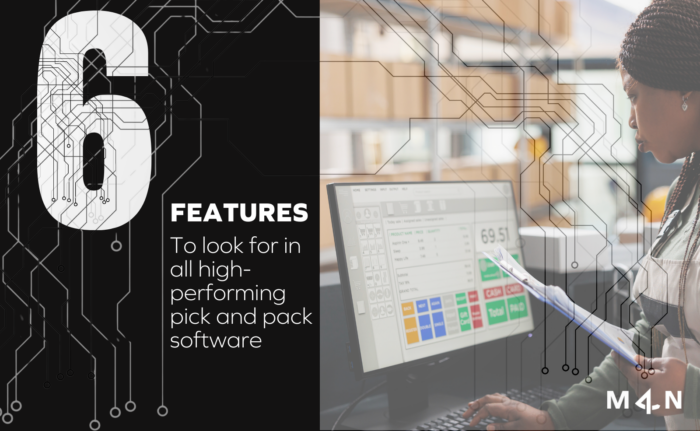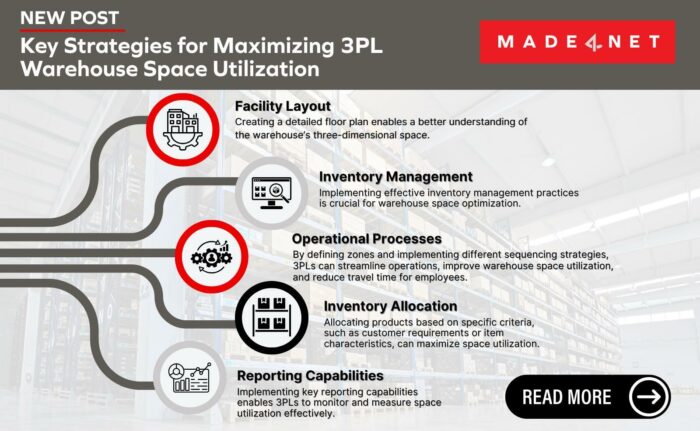
Labor is the largest—and most controllable—operating expense in the warehouse. Managing it effectively can unlock dramatic gains in cost savings, productivity, and service levels. That’s why a Labor Management System (LMS) is no longer a nice-to-have—it’s a critical tool for any operation looking to stay competitive.
As automation and technology reshape warehouse workflows, an LMS becomes the key to optimizing human performance. It enables companies to boost productivity, reduce labor costs, and better align workforce planning with real-time demand. Like Warehouse Management Systems (WMS), LMS solutions come in many forms, with flexible options to fit your operation’s size, complexity, and goals.
In this article, we’ll cover everything you need to know about an LMS, including:
- What is a Labor Management System?
- Why is a Labor Management System Important for Logistics and Warehousing?
- What are the Challenges of Labor Management?
- Benefits of a Labor Management System
- Key Features of a Labor Management System
- Labor Management System Examples
What is a Labor Management System?
A Labor Management System (LMS) is a powerful software tool designed to centralize and streamline workforce management. It’s commonly used to track employee records, monitor time and attendance, and manage shift scheduling. LMS options range from basic time-tracking tools to advanced platforms that automate scheduling and enforce attendance policies.
To drive the greatest impact, look for an LMS that goes beyond administration to deliver data-driven insights. The most effective systems empower managers to make informed decisions that reduce labor costs, boost productivity, and optimize staffing. Many modern LMS solutions even leverage AI and machine learning to monitor key performance indicators (KPIs), ensure compliance with labor laws, and accurately forecast labor demand.
Why is a Labor Management System Important for Logistics and Warehousing?
In most warehouses, labor accounts for 50–70% of total operating expenses. Effective labor management helps reduce overtime, control headcount, and improve productivity—without sacrificing quality or safety. But beyond cost, labor management matters in a warehouse for many reasons:
Efficiency and throughput depend on labor performance
A well-run Labor Management System (LMS) helps track how long tasks should take (engineered labor standards) and compares that to how long they do take. This visibility lets managers identify underperforming areas, coach employees, and streamline workflows.
Labor management supports continuous improvement
With labor data in hand, you can measure productivity over time, track the impact of process changes, and reward high performers. This drives a culture of accountability and improvement
It helps balance workload and staffing
Labor management tools let you forecast labor needs based on inbound/outbound volume, shift planning, and seasonal trends. This ensures you have the right people in the right place at the right time.
Labor management systems ensure fairness and boost morale
When performance is tracked transparently and consistently, it removes subjectivity and favoritism. Employees know what’s expected, and managers can recognize and reward strong performers—leading to better morale and lower turnover.
It improves accuracy, safety, and compliance
Trained, well-managed teams make fewer errors, follow SOPs more reliably, and maintain safety standards. Labor management doesn’t just drive speed—it supports quality too.
What are the Challenges of Labor Management?
Managing labor in warehouses isn’t straightforward. Persistent labor shortages and high turnover are placing strain on operations. Statistics show that about 73% of operators struggle to find enough staff to meet demand. Inefficient workflows and unclear performance expectations contribute to low employee productivity, excessive overtime, and ballooning labor costs. Coupled with managing complex schedules—often across multiple shifts and complying with labor laws—operations face an administrative burden.
Labor Management Challenge #1: Labor shortages
The logistics and warehousing sector continues to face a significant labor crunch. According to Modern Materials Handling, nearly 60% of supply chain leaders cite labor availability as their top concern. With e-commerce growth and consumer expectations for faster delivery, the demand for warehouse workers has outpaced supply. This shortage not only creates a bottleneck in daily operations, but it also leads to increased reliance on overtime and temporary labor, driving up costs and risking burnout among existing employees. Without the right tools to attract, retain, and empower talent, operations risk falling behind.
Labor Management Challenge #2: Inefficient workflows
Inefficiencies in warehouse workflows often stem from manual processes, poor layout design, and a lack of standardized task execution. These inefficiencies slow down order fulfillment and increase labor costs per unit. For instance, disorganized pick paths or unclear work instructions can result in wasted motion and time. According to Inbound Logistics, improving workflow efficiency can reduce order cycle time by as much as 30%. Without visibility into real-time performance or the ability to track deviations, managers are left reacting instead of proactively improving throughput.
Labor Management Challenge #3: Managing complex schedules
Warehousing involves multiple shifts, seasonal labor spikes, and fluctuating demand. Managing these variables manually is a challenge, especially when factoring in worker availability, skillsets, certifications, and legal compliance around breaks, overtime, and rest periods. Even minor scheduling errors can cause understaffing or overstaffing, affecting productivity and employee morale. A lack of automation in workforce planning can also lead to costly last-minute schedule changes, missed SLAs, or compliance risks with labor laws.
Without real-time insight into task completion, areas like idle time, bottlenecks, and inconsistency remain hidden and unresolved.
Benefits of a Labor Management System
Just like a WMS streamlines warehouse operations to improve productivity and eliminate inefficiencies, so does an LMS when it comes to employee management. The right LMS can help operations improve efficiency, lower labor costs, boost employee morale, and foster compliance.
LMS Benefit #1: Boosted Operational Efficiency
An LMS provides real-time performance visibility, enabling managers to identify slowdowns and redirect resources quickly, driving smoother operations and better capacity utilization.
LMS Benefit #2: Lower Labor Costs
By optimizing scheduling and minimizing unnecessary overtime, LMS tools help control labor expenses. Many systems integrate forecasting to align staffing with demand, reducing wasted labor and payroll inaccuracies.
LMS Benefit #3: Improved Employee Engagement
Setting clear goals and enabling real-time feedback turns labor into a team advantage. Employees are more productive with feedback and more motivated when they see their contributions and receive coaching.
LMS Benefit #4:Better Decision-Making
LMS delivers actionable dashboards and analytics, helping managers adjust labor plans on the fly and make strategic choices based on data and KPIs.
LMS Benefit #5: Compliance & Legal Confidence
With built-in tracking of hours, breaks, and certifications, LMS tools help ensure compliance with labor regulations, reducing risk and administrative overhead.
Key Features of a Labor Management System
Optimizing employee productivity is critical in the warehouse environment. A clear understanding of current labor performance and utilization is essential for helping operations develop effective metrics and standards. While LMS may come in many shapes and sizes, there are certain features that go above and beyond in helping companies improve standards.
LMS Feature #1: Real-Time Labor Tracking
Monitor individual and team productivity in real-time. This visibility allows managers to address issues as they happen, allocate resources more efficiently, and keep performance on target throughout each shift.
LMS Feature #2: Performance Standards and Benchmarking
Set engineered labor standards based on historical performance and industry benchmarks. These standards help ensure consistency, promote accountability, and support performance-based incentive programs.
LMS Feature #3: Workforce Planning and Scheduling Tools
Easily manage complex schedules, including multi-shift operations, seasonal labor, and skills-based assignments. Automated scheduling minimizes manual effort and helps ensure the right people are in the right place at the right time.
LMS Feature #4: Travel Path and Task Optimization
An LMS can analyze picking paths, reduce unnecessary travel, and prioritize tasks to streamline workflows. This helps eliminate waste and boost productivity across operations.
LMS Feature #5: Labor Cost Management
Track direct and indirect labor hours, monitor overtime, and generate accurate labor cost reports. Integrated insights help optimize staffing levels and reduce payroll errors and unnecessary spend.
LMS Feature #6: KPI Dashboards and Reporting
Interactive dashboards offer at-a-glance insight into labor metrics like utilization, productivity, and idle time. Custom reports make it easy to identify trends, support continuous improvement, and inform staffing decisions.
LMS Feature #7: Gamification and Employee Engagement
Some advanced LMS platforms include features that encourage employee engagement through gamification. Ranking systems, goals, and feedback loops motivate teams and boost morale—improving retention and productivity.
LMS Feature #8: Integration with WMS and Payroll Systems
A modern LMS integrates with your WMS and HR or payroll software, ensuring smooth data flow across platforms. This eliminates redundancy and provides a holistic view of operations.
LMS Feature #9: Compliance Monitoring
Track rest periods, shift limits, certifications, and OSHA requirements to ensure labor law compliance and reduce legal risk.
Labor Management System Examples
See how Sprouts keeps employees on task and tracks direct task time with Made4net’s WarehouseExpert™, ensuring accountability and productivity throughout the operation.


